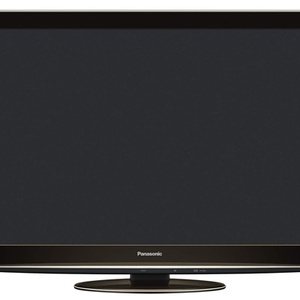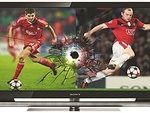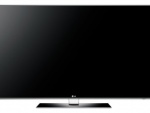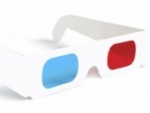
Costly, Incompatible Glasses Threaten 3D TV Sales
Movies are being made, 3D channels readied, and cable systems upgraded. It may not be quite as revolutionary as digital and high-definition TV, ...
If there's one element that seems uncooked in the current rush to 3D television, it's the glasses that viewers are forced to wear. They're big, awkward, and, for the most part, rather homely to boot. Even worse, manufacturers are hitting the market with a variety of spectacles, all incompatible with each other. And all are costly.
It's becoming clear that 3D television is seeping into American living rooms in a prelude to an eventual flood. Samsung, Panasonic, and Sony are already selling 3D televisions, and other manufacturers will later this year. Movies are being made, 3D channels readied, and cable systems upgraded.
[Three-dimensional television is among a number of new features that await HDTV shoppers.]
It may not be quite as revolutionary as digital and high-definition TV, but manufacturers are betting that 3D will help sell more sets. "It'll be like eating popcorn while watching TV," says Ross Rubin, a market analyst at NPD Group. That is, we won't do it all the time, but we'll don the glasses for special events.
If we can afford them. The problem is that the cheap, polarized spectacles handed out at movie theaters won't work at home. New 3D televisions require sophisticated "active-shutter" eyewear, and manufacturers in a rush to get sets to market haven't worked out some kinks.
At least the systems headed for living rooms seem reliable and offer a great 3D experience. "The active-shutter glasses have a powerful impact," says Peter Fannon, an executive at Panasonic. "It sometimes is even better than you'll get in theaters with the polarized glasses."
[Could 3D join the worst tech flops of the past decade?]
In theaters, cinema companies have paid to put the 3D magic into the projector and screen instead of the glasses. That makes for expensive screens but cheap goggles for the audience. A few TVs sold overseas take the same approach. But their special screens are costly: A 24-inch monitor sold here by Hyundai goes for more than $1,500, or five times the cost of a standard model. Large TVs with similar screens sell in South Korea and Japan for premiums of $1,500 to $2,000 over standard sets.
TV makers won't gamble on such expensive models for the U.S. market, where sales are particularly sensitive to price. "So the cost goes into the active-shutter glasses, which is less risky for the TV manufacturer," says Chris Chinnock, whose Insight Media tracks the 3D market.
Putting the 3D magic into glasses means the specs have to electronically synchronize with the TV set. The 3D screens rapidly flash alternating images for the left and right eye. The glasses open and close shutters over each eye so that each sees only the image intended for it, which is from a slightly different perspective. That gives the illusion of stereoscopic or three-dimensional vision.
It isn't an entirely new technology, having been tested outside the United States in thousands of cinemas that have used the active-shutter glasses. But all of the electronics make the eyewear expensive to produce. Early models will cost $150 or more. Many manufacturers are bundling one set of glasses with their 3D TVs. But outfitting a living room for movie watching can add another $450, and 3D Super Bowl parties would be a luxury for the rich.
Putting the secret sauce into the glasses makes the cost of adding 3D tech to the television itself relatively small, boosting prices by 20 percent or less. A 55-inch Samsung LCD that is selling for about $2,500 now costs about $2,950 with 3D capability. Even that premium could disappear in a year or two as 3D becomes standard on high-end sets, much as 1080p resolution has.
So, even if buyers don't want 3D, they may have little choice as the feature gets built into most high-end TVs (and moves down the spectrum in coming years). Insight Media predicts that 1 in 4 sets sold in 2015 will be 3D-capable, at least for sets wider than 30 inches. That may be a conservative outlook; some manufacturers hope that half of new sets will be 3D by then.
Read also- 'Gran Turismo' film looks under hood of racing game's 15-year history
- The Nebraska Fan's TV Guide for Week One
- New England Patriots vs. New York Giants Preseason Week Four: Start Time ...
- ISIS, Ukraine, Joan Rivers: Sunday topics
- College basketball Journal: PC going on the offense to add depth for 2015









Im from the future to tell you that is fixed now and bundles kick out glasses with purchase of TV that connect via blue tooth to TV\'s with the click of a button.